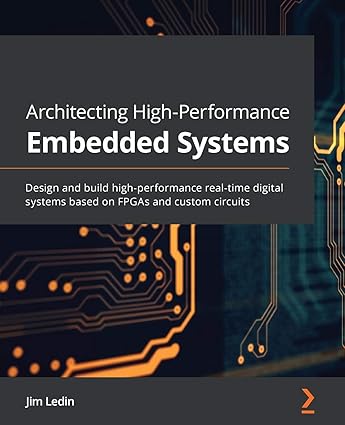Hardware-Software Co-Design and Full-Stack IoT System Development Using ARM SoCs, eFPGAs, and Virtual Platforms
Executive Summary
This white paper explores the integrated development of full-stack Internet of Things (IoT) solutions through hardware-software co-design using ARM System-on-Chips (SoCs), embedded FPGAs (eFPGAs), and virtual platforms such as QEMU. The methodology empowers efficient prototyping, performance optimization, and time-to-market reduction for smart systems. It presents tools, methodologies, and real-world use cases that demonstrate the power of combining embedded hardware and software stacks for IoT solutions.
1. Introduction
The IoT ecosystem is rapidly evolving, requiring advanced design paradigms that integrate both hardware and software development. Hardware-software co-design enables seamless integration of these domains to optimize performance, power consumption, and cost. ARM SoCs are widely adopted in embedded systems due to their high performance and energy efficiency. Virtualization platforms like QEMU and reconfigurable hardware like eFPGAs further enhance design flexibility.
2. Hardware-Software Co-Design Methodology
2.1 Co-Design Principles
- Simultaneous development of hardware and software components
- Early validation using models and emulators
- Iterative refinement through continuous integration
2.2 Benefits
- Shorter development cycles
- Early detection of system bottlenecks
- Enhanced system performance and reliability
- Improved design space exploration for performance, power, and cost trade-offs
3. ARM SoC Architecture for IoT
ARM-based SoCs integrate CPUs, GPUs, and peripherals in a single chip, making them ideal for IoT edge devices.
3.1 Key Features
- Energy-efficient ARM Cortex-M/A series cores
- Integrated security features (e.g., TrustZone)
- Peripheral support for sensors and connectivity (I2C, SPI, UART, Ethernet, etc.)
- Scalability from microcontrollers to high-performance edge processors
4. Embedded FPGAs (eFPGAs) in System Design
eFPGAs offer post-manufacturing hardware programmability within SoCs, enabling adaptable system behavior and hardware acceleration.
4.1 Benefits of eFPGAs in IoT
- Dynamic reconfiguration of hardware logic for changing application needs
- Hardware offloading of compute-intensive tasks such as signal processing, encryption, and machine learning
- Future-proof designs through field updates
- Reduction in ASIC development costs and time
4.2 Integration Strategies
- eFPGA IP cores integrated into ARM SoCs (e.g., QuickLogic, Flex Logix, Achronix)
- Software APIs and development kits for runtime reprogramming
- Co-design flows using standard HDLs and High-Level Synthesis (HLS)
4.3 Use Cases
- On-device AI acceleration using reprogrammable MAC blocks
- Adaptive sensor data preprocessing and feature extraction
- Cryptographic engine reconfiguration based on threat model updates
5. Virtual Platforms and QEMU
QEMU enables system-level simulation of ARM-based systems, facilitating rapid development and testing.
5.1 Features
- Full-system emulation of ARM Cortex CPUs
- Integration with Yocto, Buildroot, and other Linux build systems
- Debugging and performance profiling tools
- Support for device tree overlays and virtual hardware peripherals
5.2 Benefits
- Accelerated prototyping without physical hardware
- Safe environment for firmware testing
- Scalability for large test suites and CI pipelines
- Enables educational and research simulations of complex SoC environments
6. Full Stack Development for IoT
6.1 Software Layers
- Embedded OS: Linux, FreeRTOS, Zephyr
- Middleware: MQTT, CoAP, TLS
- Application Layer: Python, C++, JavaScript
- Cloud Integration: AWS IoT Core, Azure IoT Hub, GCP IoT
- Real-time data analytics with InfluxDB, Grafana
6.2 Frontend and Dashboard Development
- React.js/Angular for web-based dashboards
- Integration with REST APIs and WebSockets
- Visualization of real-time data from edge nodes and cloud
6.3 CI/CD and DevOps
- GitHub Actions, Jenkins, Docker, and Kubernetes for full-stack deployment
- Firmware Over-the-Air (FOTA) deployment pipelines
- DevSecOps for continuous security integration
7. Use Cases
7.1 Industrial Automation
- Predictive maintenance using edge AI with ARM Cortex-A + eFPGA acceleration
- Secure communication over MQTT with TLS offloaded to eFPGA
- Virtual testing with QEMU for multi-sensor systems
7.2 Smart Agriculture
- Edge-based plant health monitoring using ARM Cortex-M + eFPGA for neural inference
- Remote management dashboard using React.js
- Virtual prototyping of sensor fusion algorithms with QEMU
7.3 Automotive and ADAS
- eFPGA-based real-time image processing for driver-assist systems
- QEMU for simulation of ECU firmware updates
- Over-the-air (OTA) updates using Dockerized CI/CD pipeline
7.4 Smart Cities
- Distributed edge nodes using ARM SoCs for traffic monitoring
- Adaptive video analytics with eFPGA reconfiguration
- QEMU used for integration testing with municipal cloud platforms
7.5 Healthcare and Wearables
- Real-time biosignal filtering and classification using eFPGAs
- Secure medical data transmission with dynamic encryption cores
- Virtual testing of wearable firmware updates via QEMU
8. Tools and Frameworks
- Hardware: ARM Development Studio, Vivado, Libero, Intel Quartus, QuickLogic Open eFPGA Toolchain
- Software: Yocto, Buildroot, Zephyr, FreeRTOS
- Virtualization: QEMU, Renode, Gem5
- DevOps: Docker, GitHub Actions, Jenkins
- Modeling/Simulation: SystemC, TLM-2.0, MATLAB/Simulink
- High-Level Synthesis: Xilinx Vitis HLS, Intel HLS Compiler
9. How KeenComputer.com and IAS-Research.com Can Help
KeenComputer.com and IAS-Research.com provide comprehensive services for:
- Embedded hardware-software co-design consulting
- ARM SoC and eFPGA-based system architecture and development
- Virtual platform simulation and testing using QEMU
- Full-stack IoT application development and cloud integration
- On-site and remote training for engineering teams
- Customized solution development using eFPGA accelerators for edge AI
- Prototyping, performance benchmarking, and deployment consulting
10. References
- ARM Developer Resources - https://developer.arm.com/
- QuickLogic eFPGA - https://www.quicklogic.com/technology/efpga/
- Flex Logix eFPGA - https://www.flex-logix.com/
- QEMU Documentation - https://www.qemu.org/docs/master/
- Zephyr Project - https://www.zephyrproject.org/
- Yocto Project - https://www.yoctoproject.org/
- Achronix Speedcore eFPGA - https://www.achronix.com/products/speedcore-efpga
- Docker and GitHub CI/CD Documentation
- Xilinx Vitis Unified Software Platform - https://www.xilinx.com/products/design-tools/vitis.html
- Renode Virtual Lab - https://renode.io/
- SystemC TLM-2.0 Resources - https://www.accellera.org/
- Intel HLS Compiler - https://www.intel.com/content/www/us/en/software/programmable/quartus-prime/hls-compiler.html
For consulting, system design, and implementation services, visit:
www.KeenComputer.com and www.IAS-Research.com



